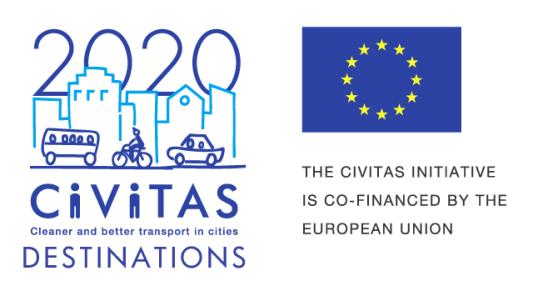- Topic
- Collective passenger transport
- Mobility management
- Urban mobility planning
- Country
- Portugal
- Resource type
- Case study
What exactly do we know about tourist’s mobility behaviour? To give an answer to this query, Horários do Funchal has performed, during last summer, two evaluation campaigns simultaneously at the airport and port of Madeira. Results are already available and provide the baseline for the CIVITAS DESTINATIONS project and food for thought for integrated planning
Context
Tourism in Madeira has growth significantly over the past years, as a consequence of the awards that the region has been collecting, the last of which “World’s Leading Island Destination” for 2017. The growing number of tourists raise a lot of issues for local authorities to deal with, as the island is small and the majority of the area is protected. There is a need thus to perform integrated planning and this requires sound empirical evidences and data for the movement of tourists and their mobility habits.
In action
Horários do Funchal, which leads locally the Destinations project put in place a new complex operation to conduct two separate surveys in each one of the main “entrances” of the island, the airport and the cruise port (total sample size of 400 individuals). These surveys were useful to capture not only mobility habits and choices of tourists, but also to capture tourist’s perception about the current regional mobility system. Considering that well-designed evaluation campaigns are a precondition for successful projects, the surveys were designed to meet the majority of evaluation needs for the whole package of 14 measures developed in the region.
Regarding the study at the airport, worth-mentioning features include the possibility to thoroughly trace back the main tourism spots tourists have visited during their visit to the island, including information on the modal choices to get there, social media preferences and information about ease of use of digital and hard-copy information required to understand better how to move around the island.
Unlike the airport, whose passengers were subject to similar surveys in the past, at the port, for the very first time, a study was developed with the aim of characterizing the profile of the cruise tourist and collecting opinions about the modes of transport used when they get shore both in Funchal and in other similar ports that are in the midst of the cruise routes that pass along Madeira (this is the case of cities/islands that also belong to the Destinations project, such as Las Palmas of Gran Canaria, which is an added synergy asset of the campaign for the overall evaluation of the project). This survey also had a sample size of 200 individuals and entailed not only tourist passengers (176) but also staff members (24 interviewees).
Results
According to the main findings, the main important characteristic of the local public transport system seems to be the feeling of safety on-board and at bus stops, regarded as exceptional by hardly all the interviewees whereas the main bottleneck is the lack of information at bus stops. On the other hand, one important aspect of the survey was the collection of tourist’s availability to form a focus-group, which is one of the most innovative initiatives that the local partners are currently organising in the local Destinations project.
The study at the port found that cruise passengers are mostly British and Americans, while crew members come mainly from countries such as the India and the Philippines. Tourists arriving in Madeira that do not remain onboard prefer taking organized tours in rented bus (30%), followed by walking (27%) and other modes of transport (15%, which includes boat sailing, cable car or tuk tuks), leaving public transportation as a poorly used option with only 3% of preferences. However, in comparison with other ports of call, public transport usage is more or less similar (average of other ports accounts for 4%).
Challenges, opportunities and transferability
There is a lot of work to be done in order to boost public transport usage among cruise tourists. One example is that the large majority of tourists have said that for only 5 €, they would make a public transport trip to the main tourist attractions of the island, which is a good indicator of future use, especially among those who stay in the island for more hours than the usual.
With this information duly digested by the local DESTINATIONS partners in Madeira, integrated measures can be prepared and added to the current regional transport strategy – which was previously focused on locals only – so as to pave the way for greener mobility solutions among tourists and locals alike in touristic cities located in islands. So, one envisages that exciting times are, therefore, ahead of us in Madeira to what sustainable transportation is concerned.
This case study has been prepared for the European Commission however it reflects the views only of the authors, and the European Commission is not liable for any consequence stemming from the reuse of this publication.

